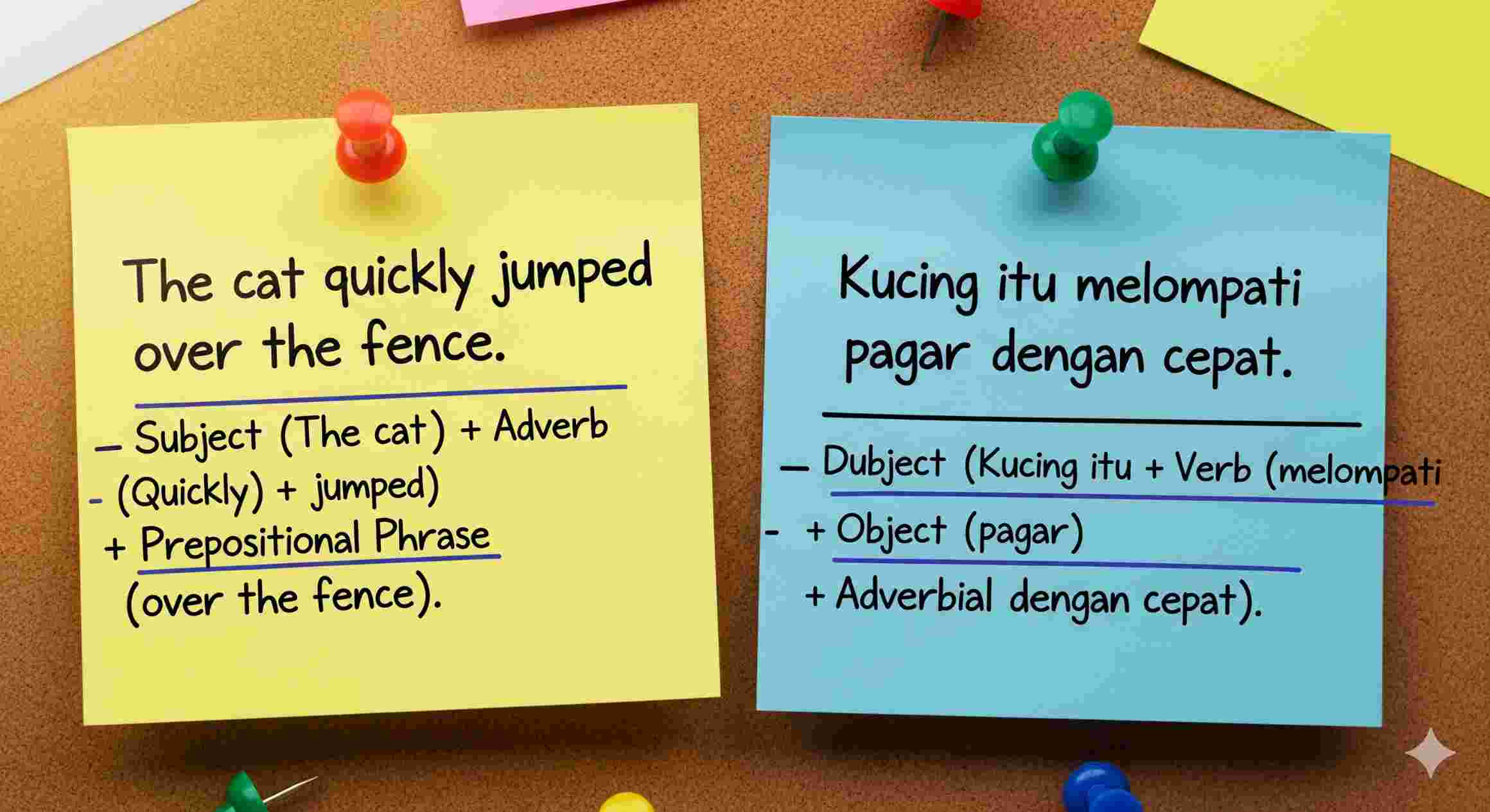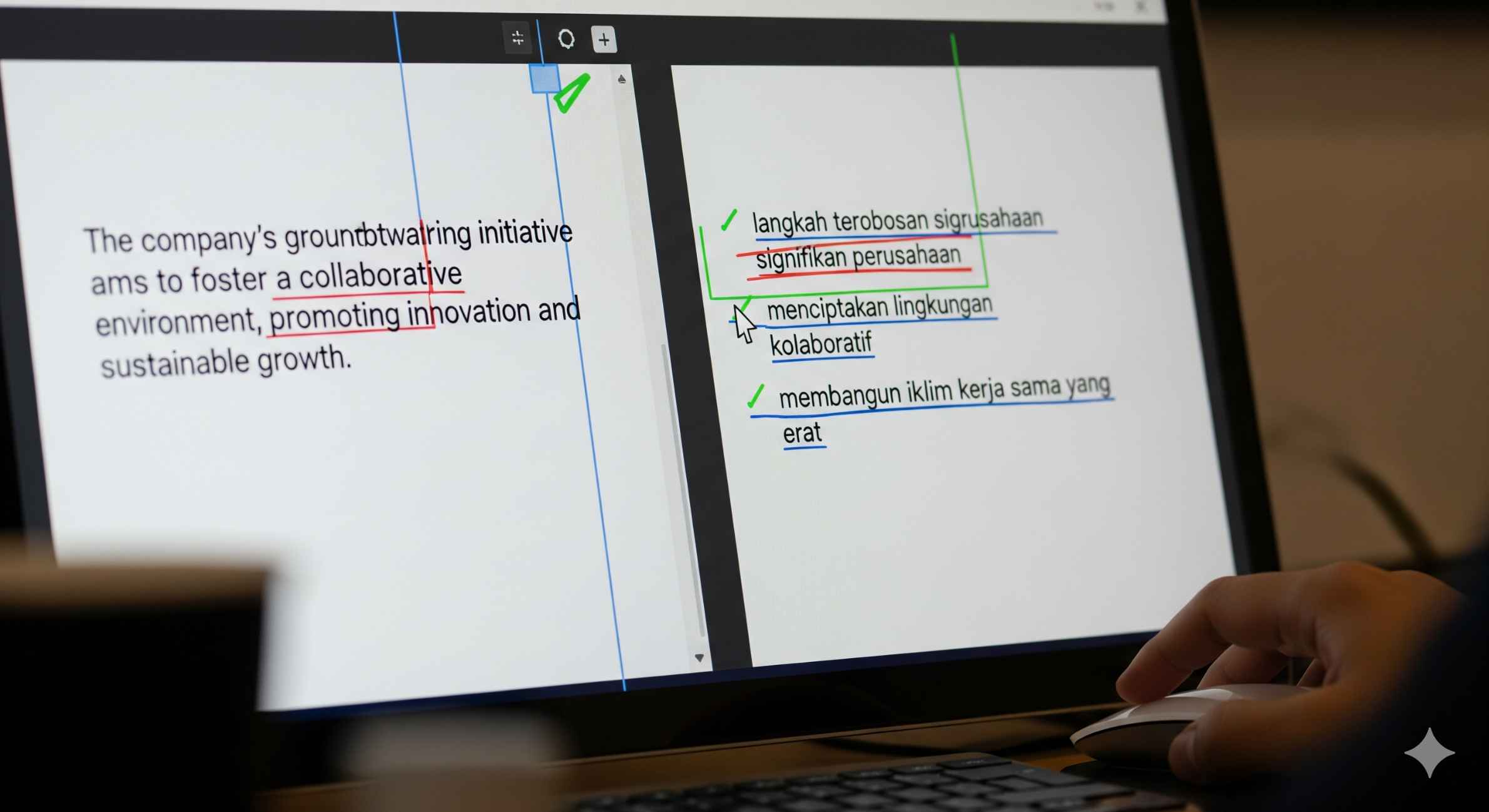Okay, confession time.
The first time I tried doing a terjemahan Inggris ke Indonesia for a project proposal, I thought, “Hey, I’ve got Google Translate. This should be easy, right?” Famous last words.
What I ended up with was a string of grammatically correct sentences that made absolutely zero sense to the client. It read like someone had asked a robot to write a love letter—technically correct, emotionally void, and unintentionally hilarious. Safe to say, I learned the hard way that translation isn’t just about converting words—it’s about preserving meaning, tone, and context.
So if you’ve ever struggled with awkward translations, or felt that the Indonesian version of your writing lost all the sparkle of the English one—you’re not alone. Here’s how you can improve your game, avoid sounding like a dictionary, and actually connect with your Indonesian audience.
Why Does English-to-Indonesian Translation Feel So Awkward Sometimes?
One word: structure.
English and Indonesian are wildly different in how they build sentences. English tends to be linear and packed with adjectives. Indonesian? It’s more flexible, more contextual—and often more polite in tone. That means a literal, word-for-word approach often sounds robotic or just…off.
Also, idioms and slang rarely translate neatly. “Break the ice” becomes “memecahkan es”? Not unless you’re talking about actual ice cubes. So, a good terjemahan Inggris ke Indonesia needs cultural fluency—not just linguistic knowledge.
And if you’re translating business documents or tech content, there’s a fine balance between sounding professional and sounding like an outdated instruction manual. The trick? Translate ideas, not just words.
What Should You Watch Out For When Translating English to Indonesian?

There are a few common traps most people fall into when translating, especially if they rely too heavily on tools or think “Bahasa Indonesia is easier.” Spoiler: it’s not.
First, false friends. These are words that look similar in both languages but don’t mean the same. “Actual” doesn’t mean aktual. “Event” doesn’t always mean acara. The wrong one can totally change your message.
Second, tone mismatch. English emails might be friendly and direct: “Hey, just checking in.” In Indonesian, we lean toward softer openings: Halo, saya ingin menindaklanjuti…. Keeping the right tone can make or break your professionalism—especially in corporate or academic settings.
Finally, there’s overtranslation—adding too much just to “sound smarter.” Clear and concise beats flowery and confusing every time.
How to Do a Terjemahan Inggris ke Indonesia That Actually Sounds Natural
Here’s my go-to method when translating English to Indonesian without losing your mind—or your meaning.
Step-by-Step Translation Process
- Read the Whole Thing First
Before you translate a single word, read the full text. Understand the tone, purpose, and audience. Is it casual? Business? Instructional? Knowing this shapes how you structure the translation. - Draft a Rough Translation
Start translating sentence by sentence, keeping the meaning clear but not obsessing over every word just yet. This is your “first pass”—the rough cut. - Rewrite for Flow
Now go back and read your draft out loud. Does it sound like something a native Indonesian speaker would say? If it feels clunky, rephrase it. Focus on natural phrasing and cultural relevance. - Watch for Consistency
Especially in documents with technical or repeated terms. Create a glossary of key terms and stick with them. If you’re translating “submit,” don’t switch between kirim, ajukan, and masukkan randomly. - Proofread Like You Didn’t Write It
Take a break, then come back and read it with fresh eyes. Typos, missing context, or misused words are way easier to spot after you’ve stepped away.
What Tools Help with Terjemahan Inggris ke Indonesia (Without Doing All the Work for You)?

Translation tools are great, if you use them smartly. They’re not your brain—they’re your backup.
Google Translate is okay for one-off words or getting the gist. But it’s not great with nuance or idioms. It’ll tell you the meaning, not the intent.
DeepL (if available for Indonesian) tends to be more accurate with tone and structure, especially for longer texts. It’s the slightly more thoughtful cousin of Google Translate.
Kamus Besar Bahasa Indonesia (KBBI) is your best friend when checking if a word is legit or outdated. Trust me—nothing’s worse than using a word no one’s said since 1993.
For longer or critical texts, I also recommend running your translation by an actual native speaker—especially if it’s going live on a website or sent to a client.
Also Read: Translate Inggris-Indonesia
FAQ: Real People, Real Translation Problems
Do I need to translate everything literally?
Nope, and you shouldn’t. Literal translations often miss the mark. Focus on meaning. For example, “break a leg” isn’t about broken limbs—it means good luck. Translate for intent, not word count.
What if I’m not fluent in Indonesian?
You can still translate effectively, but take it slow. Use tools to assist, double-check your grammar, and maybe run your final version by someone fluent. Learning-by-doing is real—but so is making avoidable mistakes.
Is formal Indonesian always necessary?
Depends on context. For business, academic, or official docs, yes—use formal Indonesian. For social media or internal team chat? You can be more relaxed. Just don’t swing too far into slang unless it suits your audience.
Can AI help me translate faster?
AI can give you a solid starting point, especially for repetitive content. But it still lacks the human touch. Always review, rewrite, and adapt AI-generated translations to make them sound human.
Go Forth and Translate (But Make It Make Sense)
Here’s the deal: mastering terjemahan Inggris ke Indonesia isn’t just about language—it’s about empathy, clarity, and cultural awareness. You’re not just swapping words; you’re building bridges.
So whether you’re localizing your startup’s website, translating your resume, or just trying to make your captions bilingual—take your time. Read it out loud. Think like your audience.
Final tip: When in doubt, keep it simple. Good translation is invisible—it just feels natural.
Now go make your words count—in two languages.
 aspectswebdesign.com
aspectswebdesign.com

